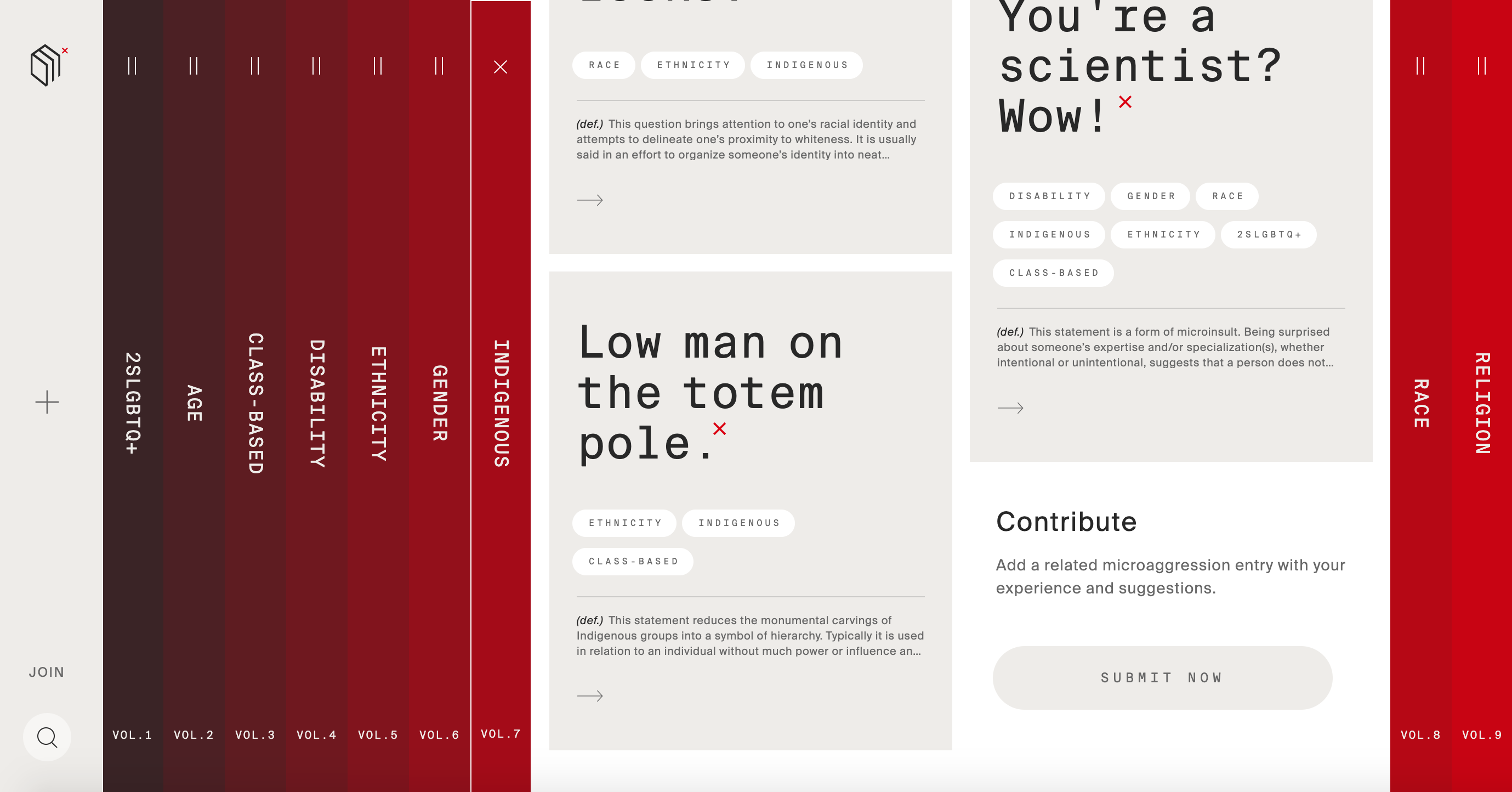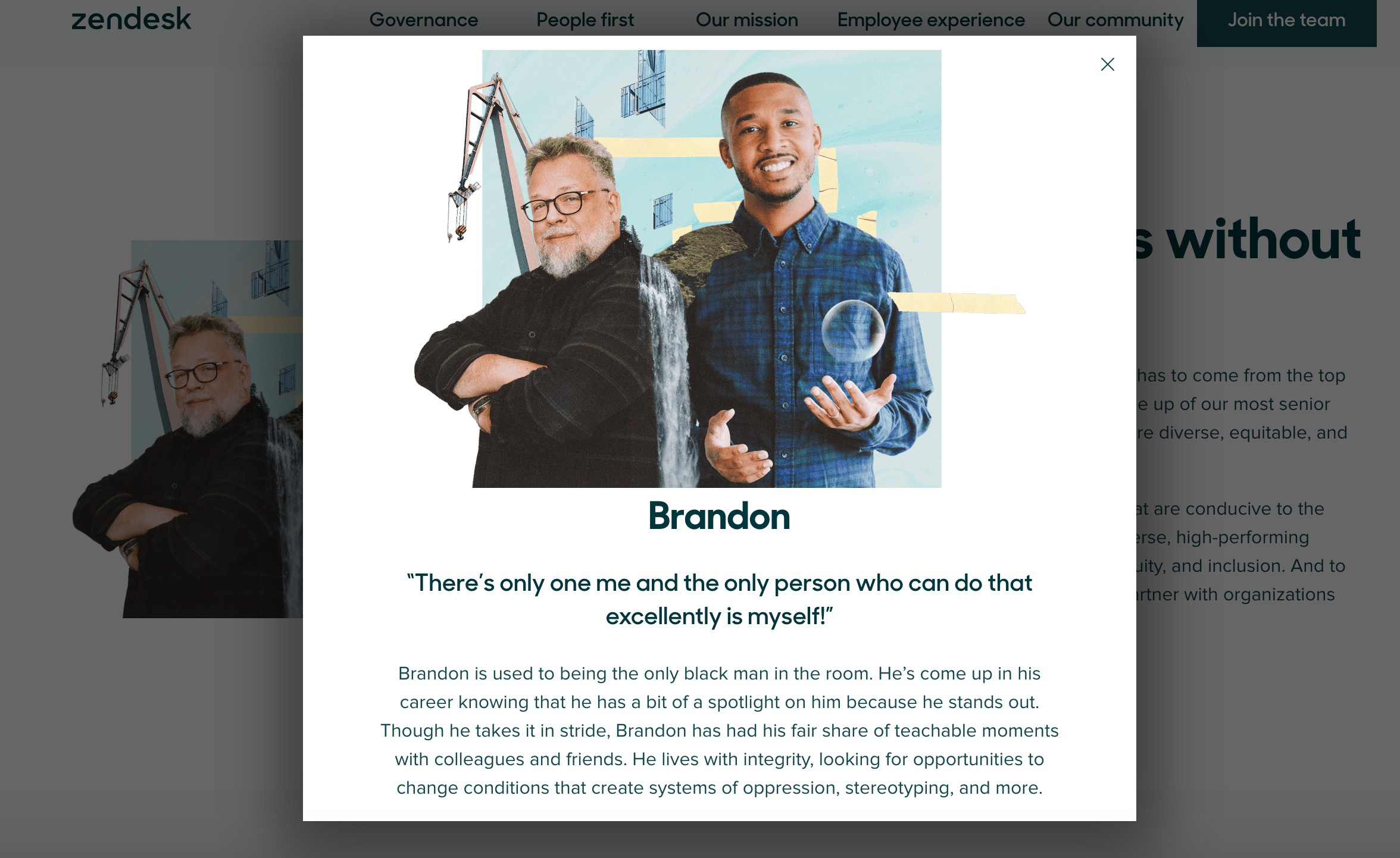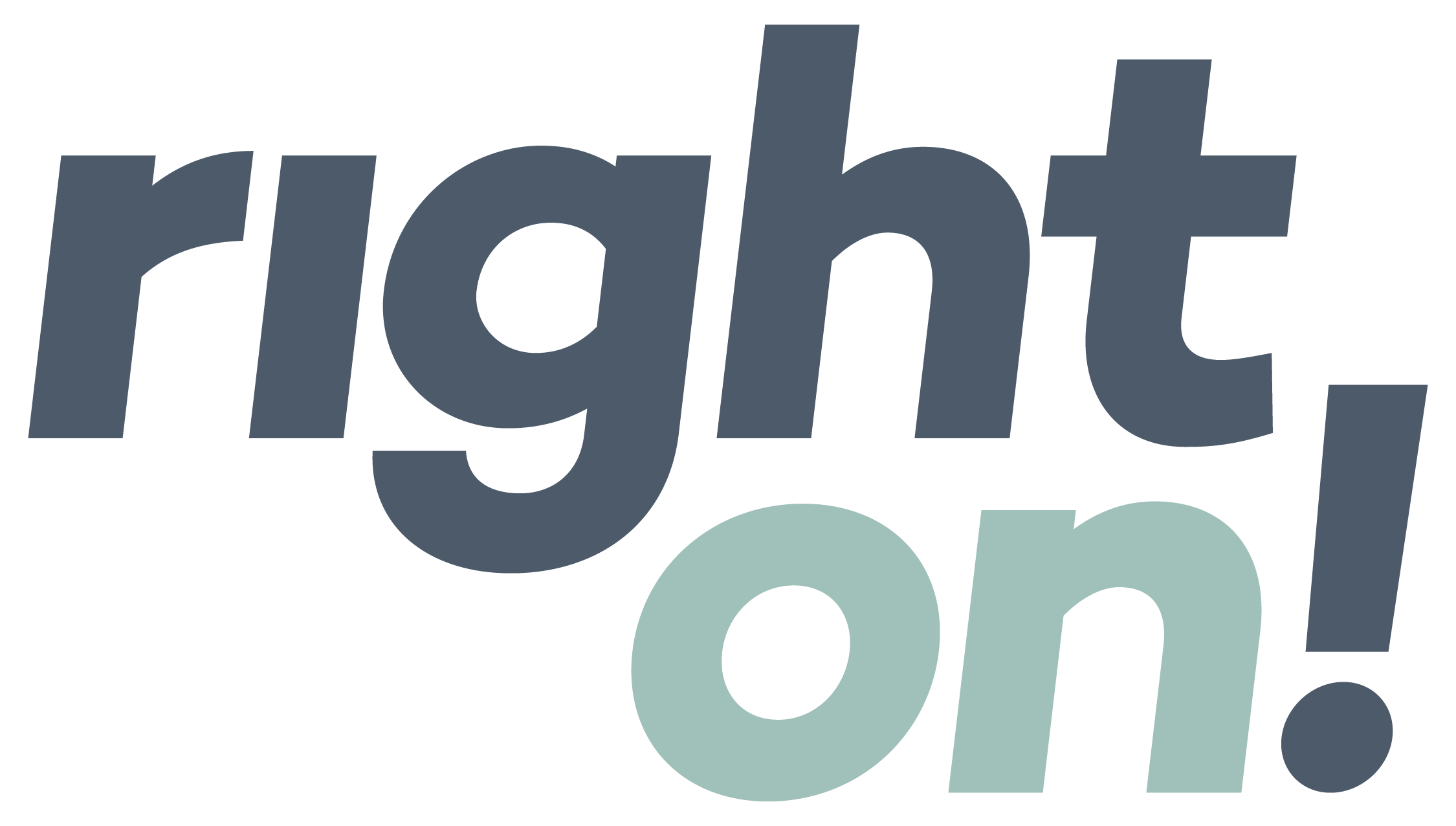
Human stories, not corporate soliloquies.
“She’s probably on her period.”
“You look so exotic.”
“Were you even born when that happened?”
If you’ve been the recipient of microaggressions like these—or if you’ve unwittingly used one—you’re not alone. These everyday slights and snubs happen in the workplace all the time—and training employees to recognize and respond to them is part of many companies’ DEI commitments.
But to actually change behaviors, you need more than commitments. You need action. And to inspire that action, you need compelling, thought-provoking content that reflects your DEI values and vision.
That’s why I love The Micropedia of Microaggressions, which shows—rather than tells—how microagressions cause harm. Simply and elegantly organized by clickable categories, each entry highlights a common microagression and provides resources for learning more about its real-world impacts. Site visitors can also share their own experiences with microagressions.
It’s the kind of content that brings DEI principles to life, and it got me thinking about what makes for truly compelling DEI content—and how you can apply these strategies to your own projects.
Dialogue, not monologue.
One thing that works so well about The Micropedia of Microagressions is the way it invites the visitor to participate in building the micropedia. DEI isn’t a one-way conversation—it’s about listening and learning together. The Micropedia of Microagressions really gets that and builds two-way dialogue right into its creative execution.

Human stories, not corporate soliloquies.
When DEI initiatives connect directly to a company’s mission and vision, the work tends to have staying power—even in the face of anti-DEI rhetoric. But to really own this power and inspire lasting change, you must combine a clear vision and measurable targets with authentic, personal stories. By putting people at the center of your DEI content, you humanize your practices and avoid the corporate chest-beating that comes from focusing on what you do rather than who you do it for.
The execution of a human-centric strategy can be simpler than you think. I love how Zendesk’s DEI web page uses short-but-impactful popups to interrupt the corporate narrative with personal stories from the people who’ve been impacted by their work.

Steady notes, not one-hit wonders.
Communicating DEI must go beyond a page on your website and an annual report. And content definitely shouldn’t show up just for Black History Month or International Women’s Day. Instead, tell your story consistently and frequently everywhere your audience goes—from newsletters to social channels to events to your blog and beyond. A quarterly DEI content plan that ties to your key initiatives and milestones will help you plan a steady stream of content—so you can reinforce your initiatives and inspire people to embrace the inclusive culture you’re working to create.
At the foundation of all this content: branded and inclusive language that reflects your values and welcomes everyone. Words matter, and using them intentionally shows that you truly care about your employees, your customers, and everyone you serve.
Our Most Recent Insights.
SEE ALL INSIGHTS →
Uncategorized
A more hopeful Earth Day
When it comes to climate messaging, we’ve learned that stories of hope and optimism inspire action.

Reporting
CEO letters that sing (sometimes literally).
Break free from the standard CEO letter format—and create a standout opener for your next sustainability report.

Reporting
The anti-DEI sharks are circling. But they’re toothless.
When inclusion, diversity, equity, and belonging programs are embedded in your company’s values, you can communicate bravely in the face of DEI backlash.
